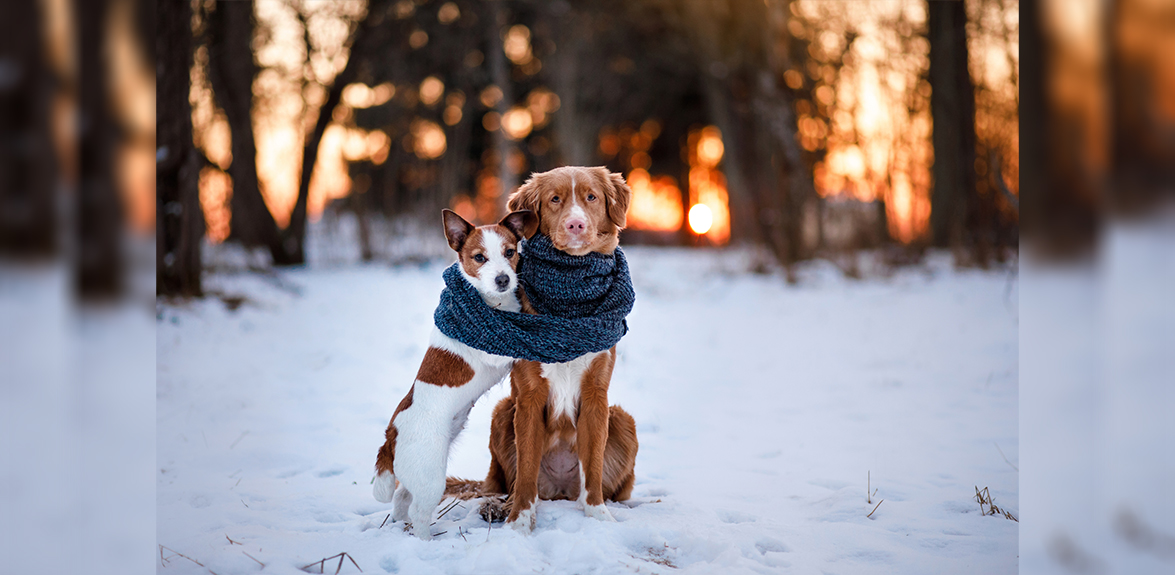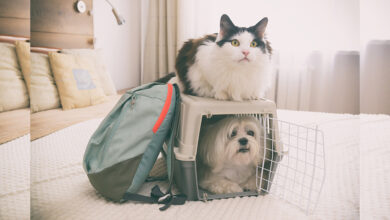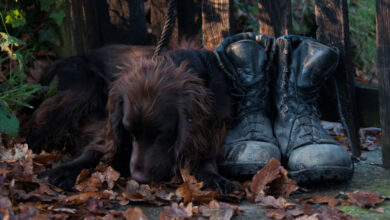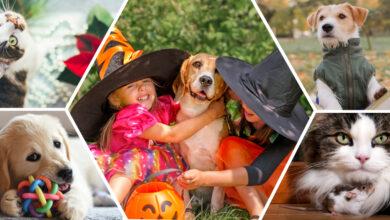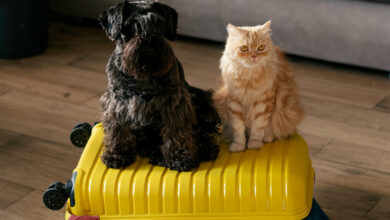 Most of us who own pets want them to stay as healthy and happy as possible. The winter months can present some specific challenges to the welfare of our furry friends – freezing temperatures and some of the trappings that go with them can be a particular problem. Ensure your beloved canine or feline family member stays healthy and safe by following these helpful tips.
Most of us who own pets want them to stay as healthy and happy as possible. The winter months can present some specific challenges to the welfare of our furry friends – freezing temperatures and some of the trappings that go with them can be a particular problem. Ensure your beloved canine or feline family member stays healthy and safe by following these helpful tips.
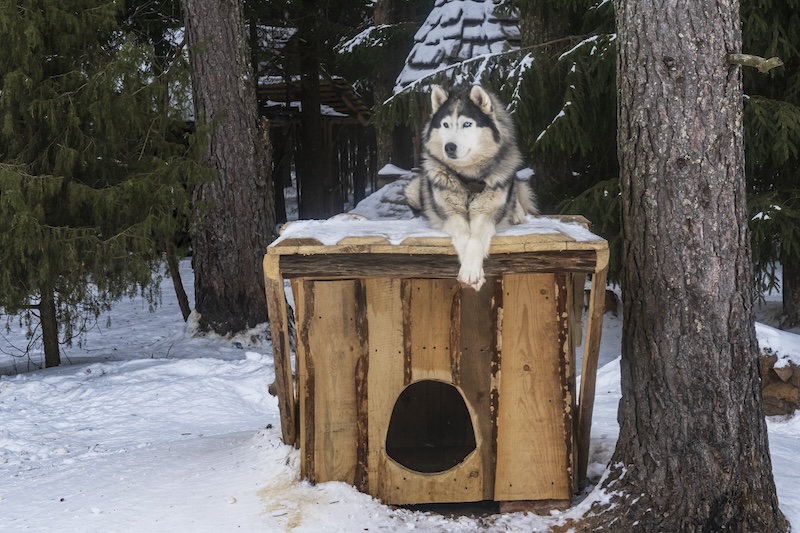
1. Always ensure that your pet has shelter.
Even with a thick coat of fur, many dogs simply can’t keep warm enough in the bitter cold. Dr. Renee Fleming, a veterinarian at the Guelph Animal Hospital, advises that pets should not be left outside for long periods of time. In particular, “short-haired breeds like Great Danes, or lean breads like Greyhounds, can really feel the cold and wind and can lose body heat quickly.”
In this day and age, most dogs spend at least part of their time in the house. But for those pets that must remain outdoors for longer periods of time, provide a doghouse. Ensure that there is bedding and check it daily to make sure that it is dry. Provide fresh water each day, and check to make sure it hasn’t frozen. There are inexpensive warmers on the market to keep pet water from freezing.
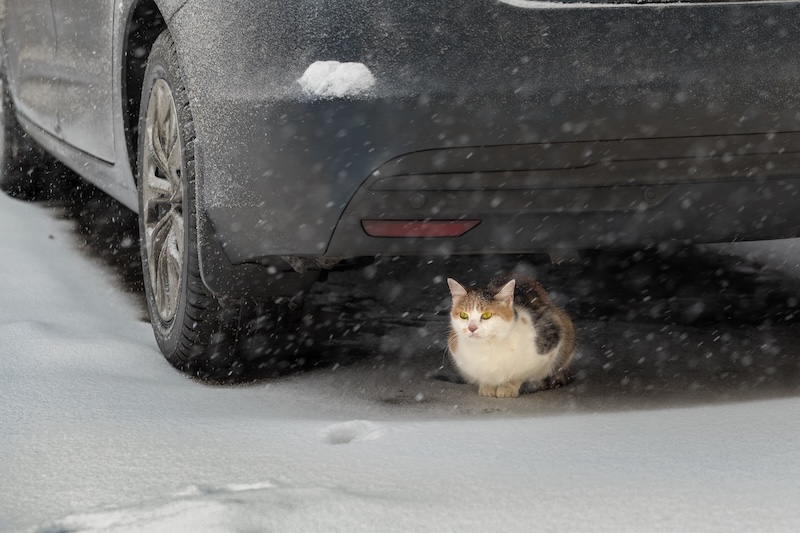
2. Check your car before driving off in the morning.
Outdoor cats are notorious for crawling up into warm vehicles in the night. If you start the car with a cat in the engine, they can be severely injured or killed. Dr. Fleming suggests that you bang on the hood of your vehicle each morning, if you have roaming cats in your neighbourhood.
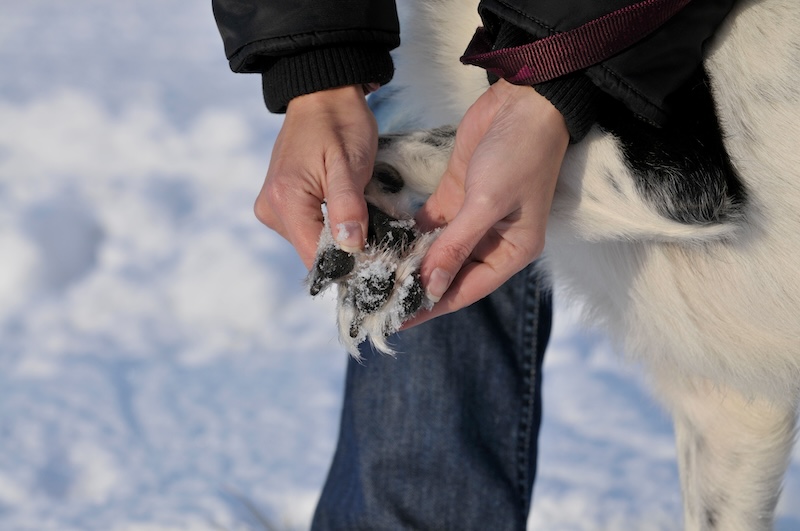
3. Keep an eye on paws.
Keeping the hair trimmed between your pooch’s toes can help prevent snow from clumping. Also, trimmed claws provide better traction on ice. The salt used to melt ice can really irritate a dog’s feet. If salt is heavily used in your neighbourhood, consider putting boots on your dog … or wipe the bottom of their feet with a warm, wet cloth when you get home. Dr. Fleming suggests that you avoid heavily salted areas, if possible. She also points out that there are pet-friendly de-icers on the market that you might want to consider using on your driveway.
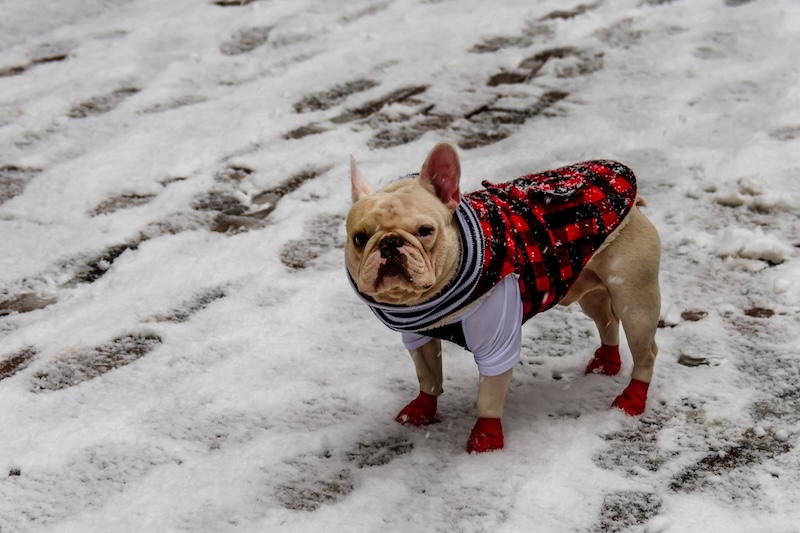
4. Real dogs do wear coats. Cats do not.
If you have a short-haired or very lean dog, they may require a bit of extra cover. A dog coat may be a good idea, particularly if you like to go on extra long walks. On the other hand, cats rarely cope well with a coat, and will usually try to get it off. Note that a coat is not a good idea for any unsupervised dog or cat. If they squirm to get it off, there is a risk of suffocation.
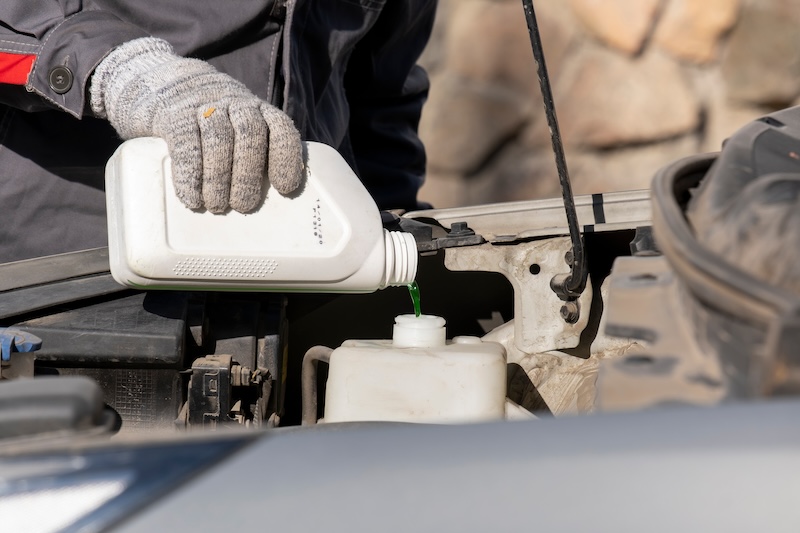
6. Keep antifreeze out of reach.
Antifreeze has a sweet taste that many animals like, but it is poisonous. Always keep it well away from anywhere your pet spends time. Even a very small amount can be fatal! If your vehicle is leaking antifreeze, or if you spill some, Dr. Fleming advises covering it with cat litter and then sweeping it up once it has absorbed.
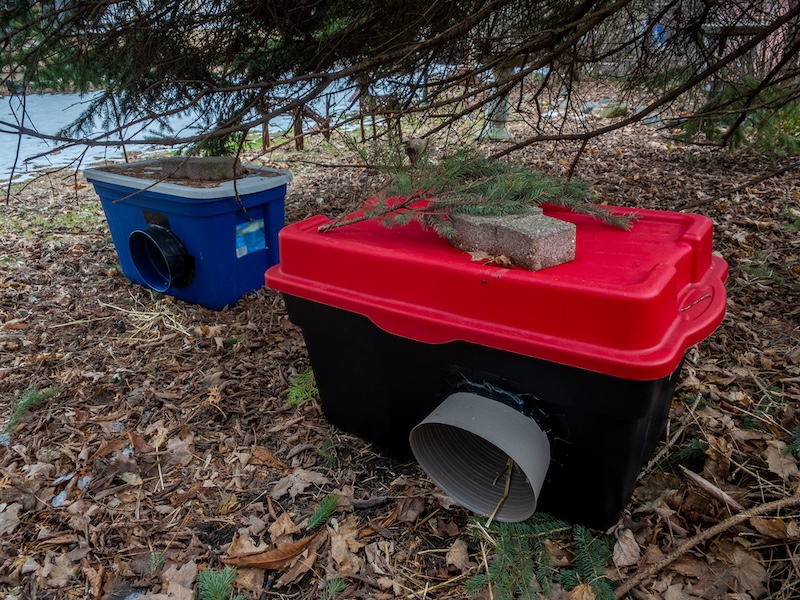
7. Attempt to transition outdoor cats indoors.
If you care for feral or abandoned cats that live outside all the time, you may want to transition these cats indoors if possible. In the meantime, provide shelter and food for them. Dr. Fleming says, “It’s a good idea to make sure the cat doesn’t actually belong to someone else.” Make sure you give your local Humane Society a call first!
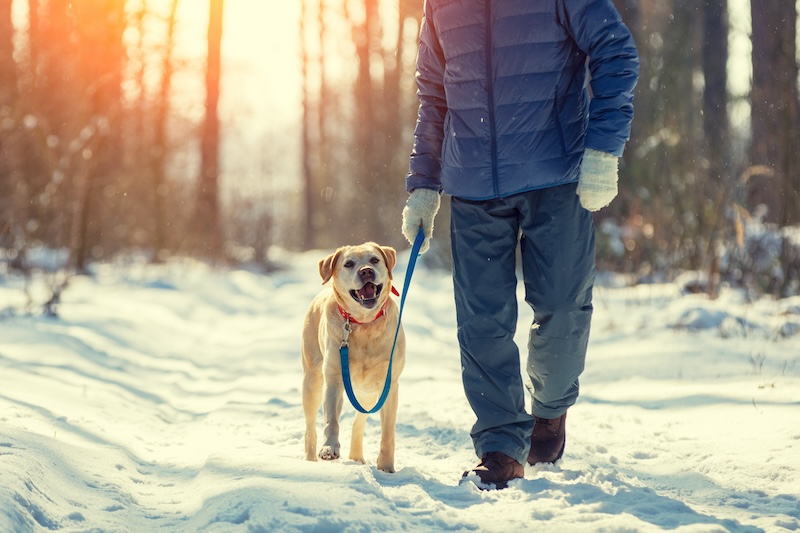
8. Don’t stop the exercise.
Many dogs end up gaining excess weight during the winter months (much like their owners). As unpleasant as you may find it, don’t give up the daily dog walk just because the thermometer is dipping down. Both you and your furry friend will benefit from staying active throughout the winter months. Since you are more likely to be walking your pooch in the dark during the winter months, ensure that you wear reflective gear on both of you if you plan on walking before sunrise or after sunset.
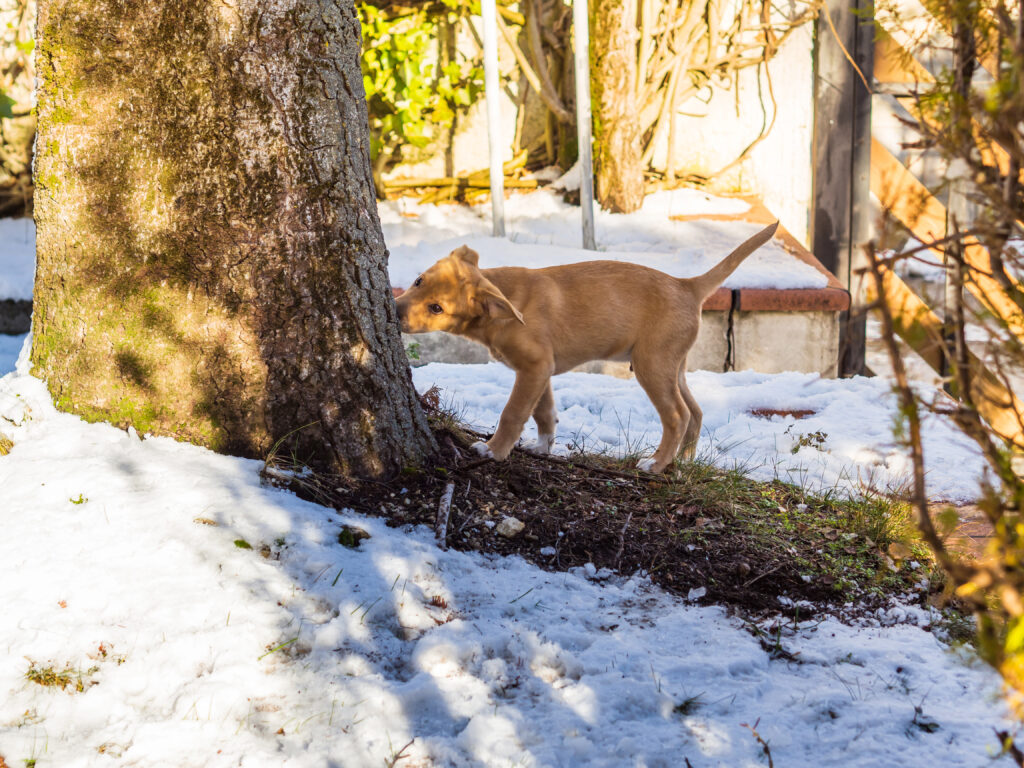
9. Encourage reluctant pets to have bathroom breaks.
Some pets dislike the cold temperatures so much they refuse to go outside to relieve themselves. If this is happening with your pet, there are things you can do to help. Put a sweater or coat on them. Shovel a small area of your yard so your pet isn’t belly-deep in snow. Stay close. Give rewards. Dr. Fleming doesn’t recommend litter training for dogs, since most dogs benefit from a bit of outside time each day. Cats, on the other hand, do very well inside in the winter and can get all the exercise they need indoors.
As we all know, winter in Canada is not for the weak of spirit. It takes a bit of care and attention, but with some planning, your pets can enjoy the winter season every bit as much as you do.


